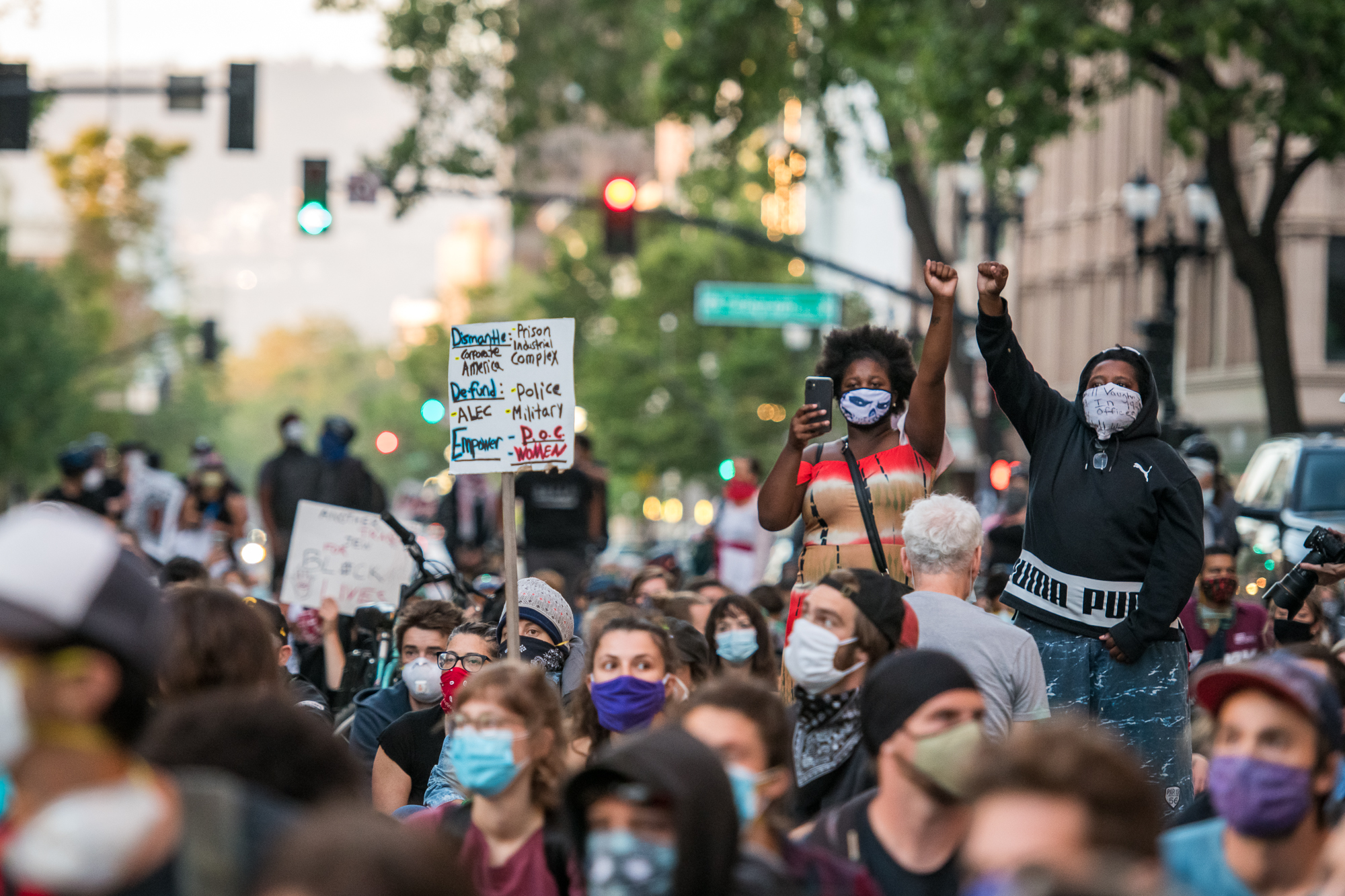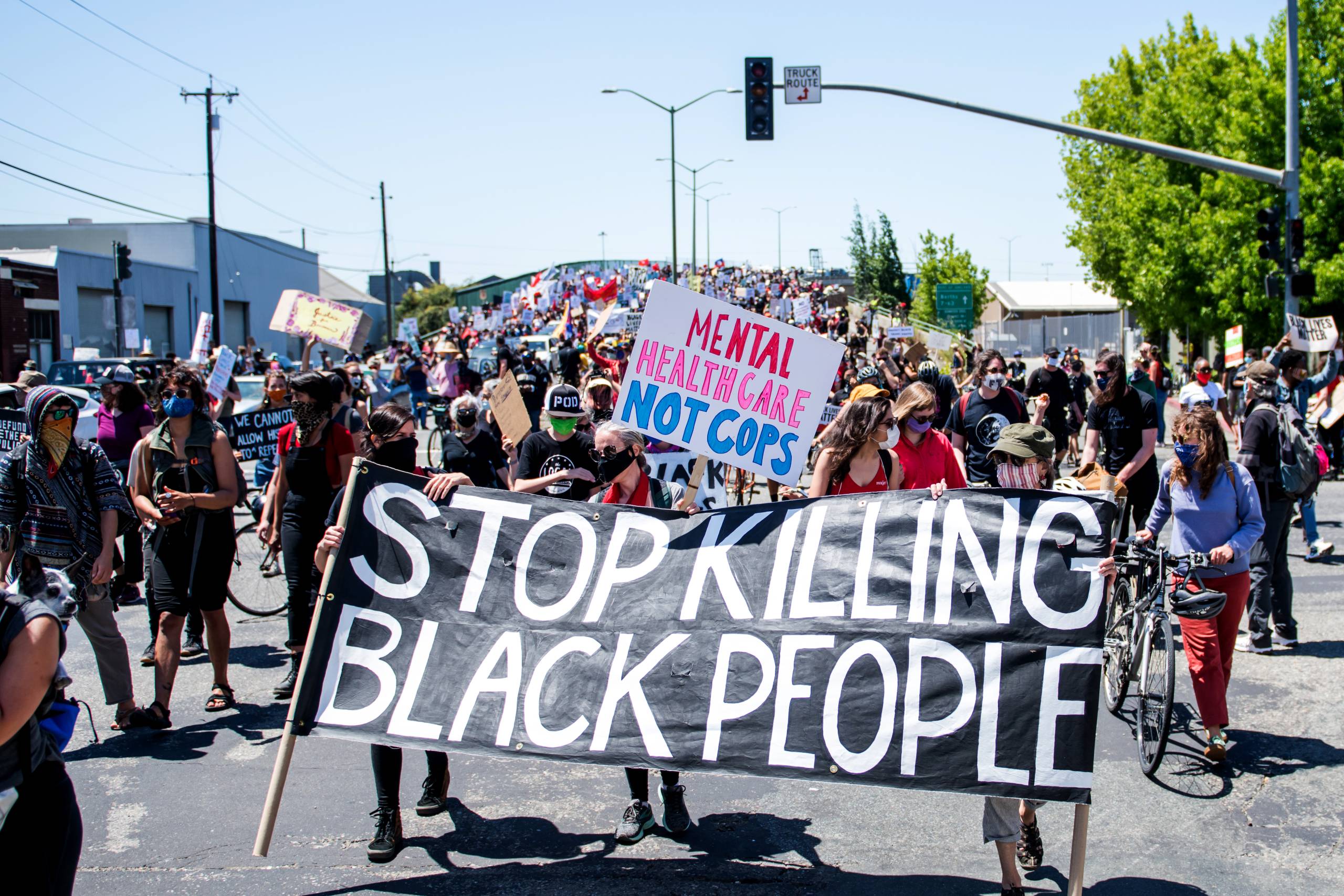Even though the social unrest was more than a half-century apart, the catalyst was the same: police brutality.
In the Bay Area, the protests began peacefully.

In Oakland four years ago, the energy was palpable. And that was before Brianna Noble showed up in style on a horse. My colleague, Beth LaBerge, took one of the photos of Noble that went viral as Noble led the march down Broadway. Anchored by LaBerge’s photos, this commentary documents the Oakland protests and examines what resulted from the weeks of racial uprisings that swept the Bay Area, California and America.
Highways were shut down as peaceful protesters voiced their frustrations. People shouted, “Hands up, don’t shoot,” and “I can’t breathe” as they marched. They demanded a portion of city budgets reserved for policing be instead earmarked for community programs to address systemic issues such as poor schools and lack of opportunities.
Most people wore masks because the pandemic was raging. But get this: the crowds were a representation of America, as Black, white, Latino and Asian people marched shoulder-to-shoulder for racial justice.
The response by police — pepper spray, rubber bullets and baton swipes — caused frustration to erupt into vandalism and theft. Storefront windows were broken, and buildings and cars were set on fire. This was the racial reckoning America needed, I thought.
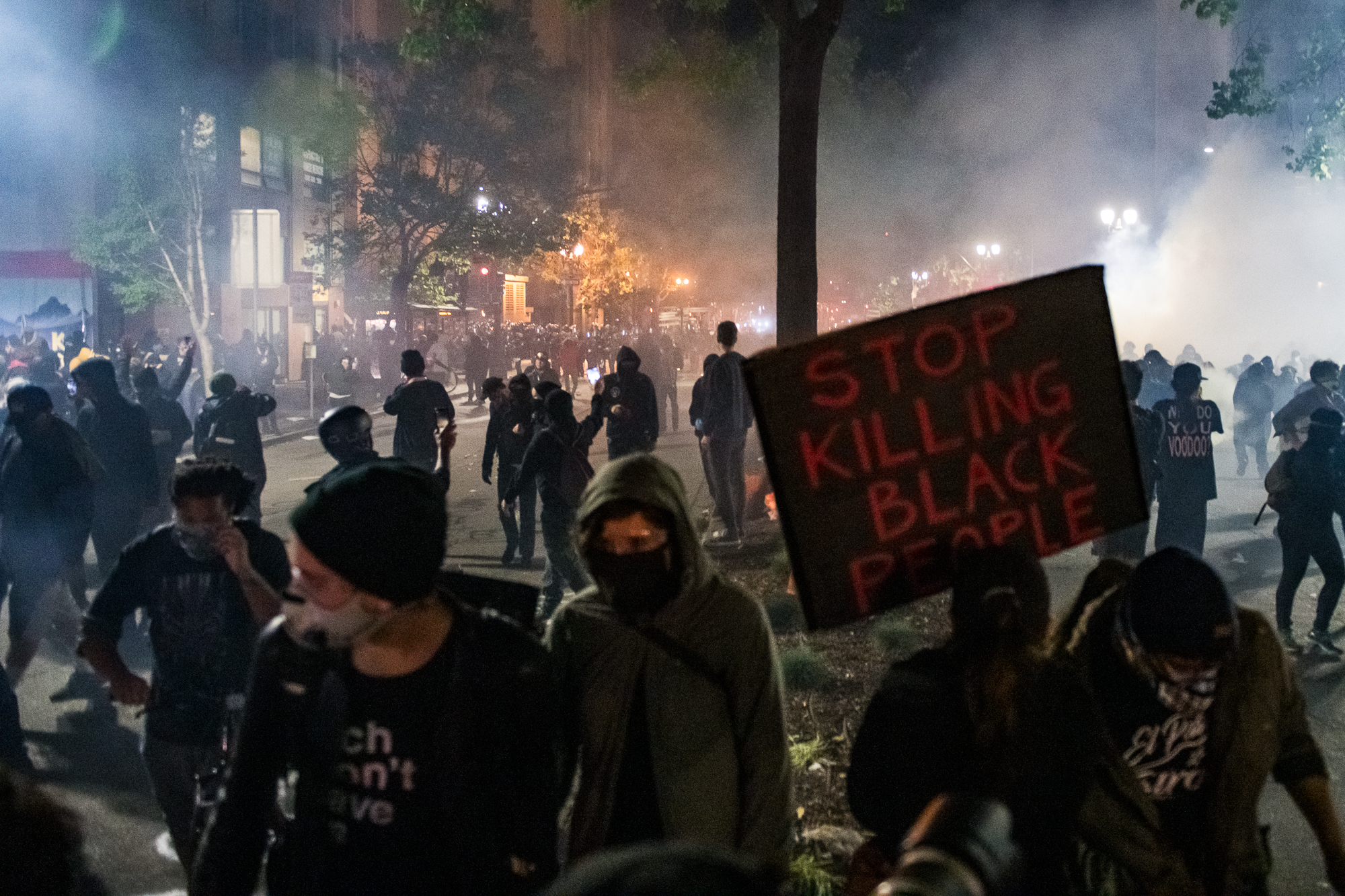
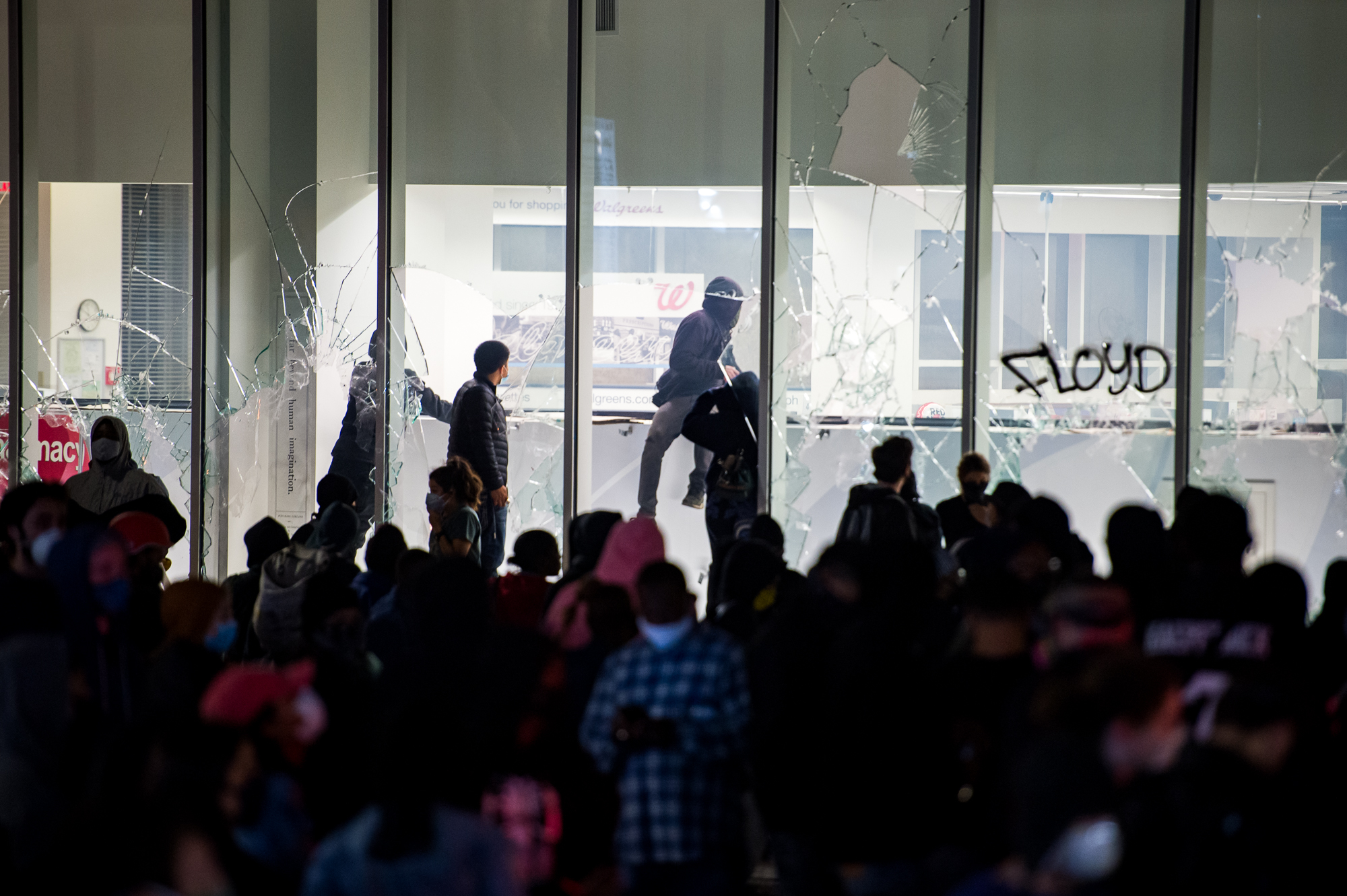
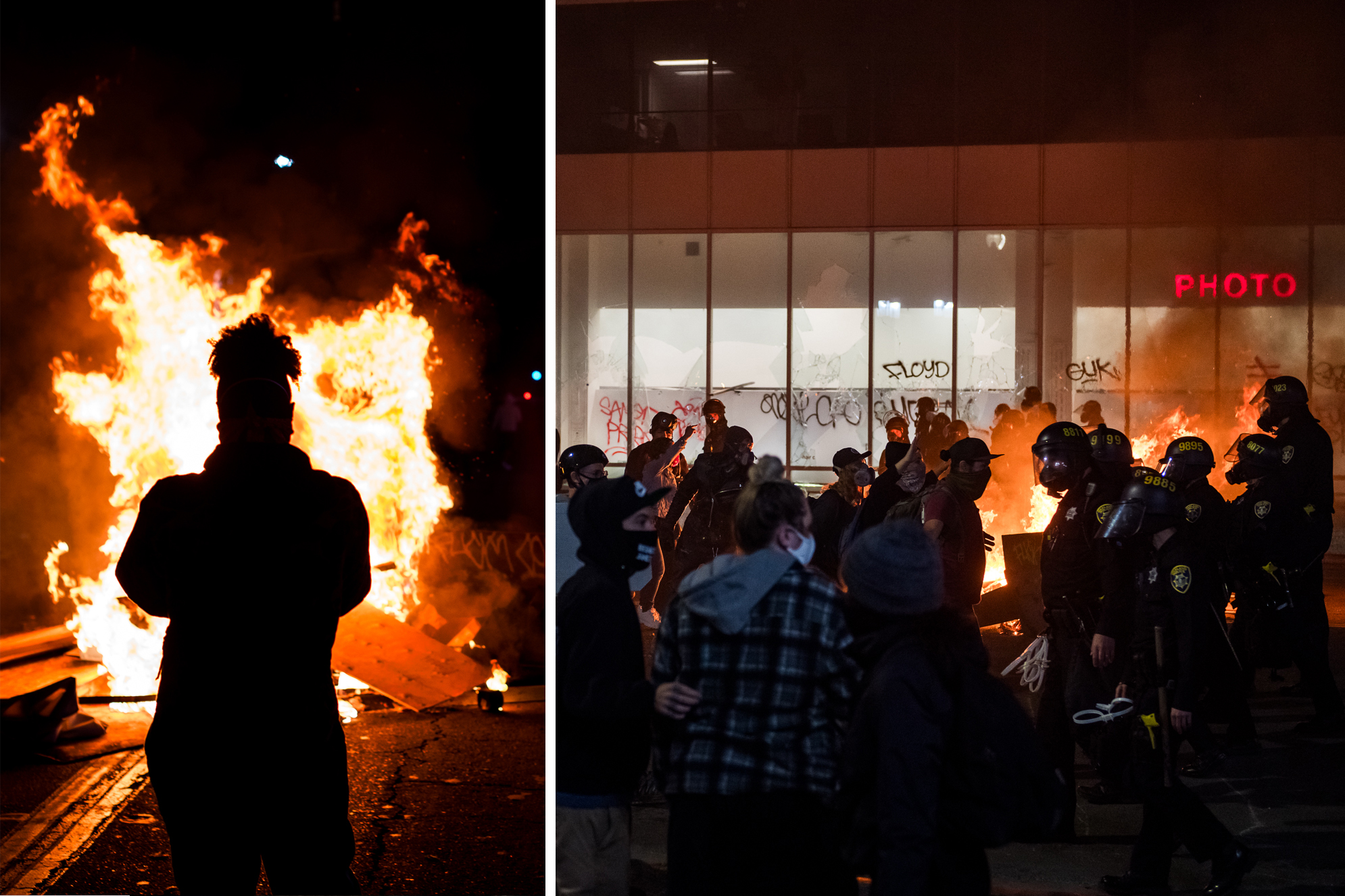
“Instead of reserving ire for looters, I urge you to question the system that’s historically refused to acknowledge human rights violations until property is damaged,” I wrote in a column for the San Francisco Chronicle, my employer then. “Sadly, the brutalization of Black and brown people doesn’t get the same attention as looting does. But when cities burn, elected officials listen.”
One elected official did more than listen.
The social upheaval from four years ago led then-Assemblymember Shirley Weber to write Assembly Bill 3121, which created a task force to study and develop reparation proposals for African Americans. It was enacted on Sept. 30, 2020.
“I just knew that we had had enough conversation in the nation about reparations at the federal level that it wasn’t going to happen immediately,” Weber, who was appointed secretary of state in December 2020, told me in 2022. “I didn’t ask permission from anybody. I didn’t coordinate and collaborate. I informed the Black Caucus what I was doing. I didn’t even ask their permission.”
The California Reparations Task Force, the first statewide body to study reparations, wasn’t a performative gesture.
“We know the damage has been done,” Weber said. “So I didn’t want to spend my years talking about whether there was or not damage. We needed to talk about how much was done and what we need to do to rectify it.”
Weber continued: “I knew I could get it through California. And I knew once I got it on the governor’s desk, we could get the necessary people to basically support it. And he would, too.”
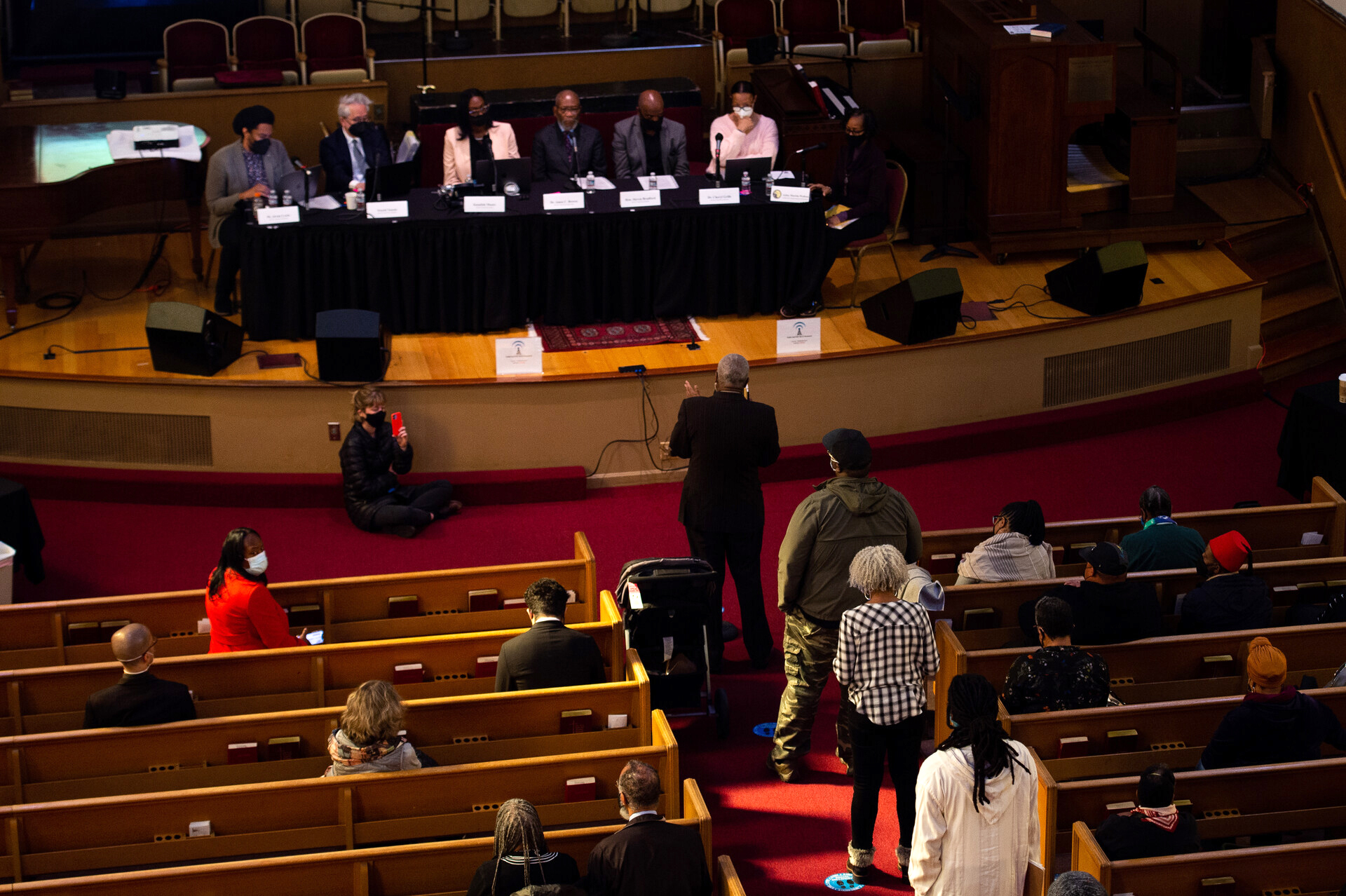
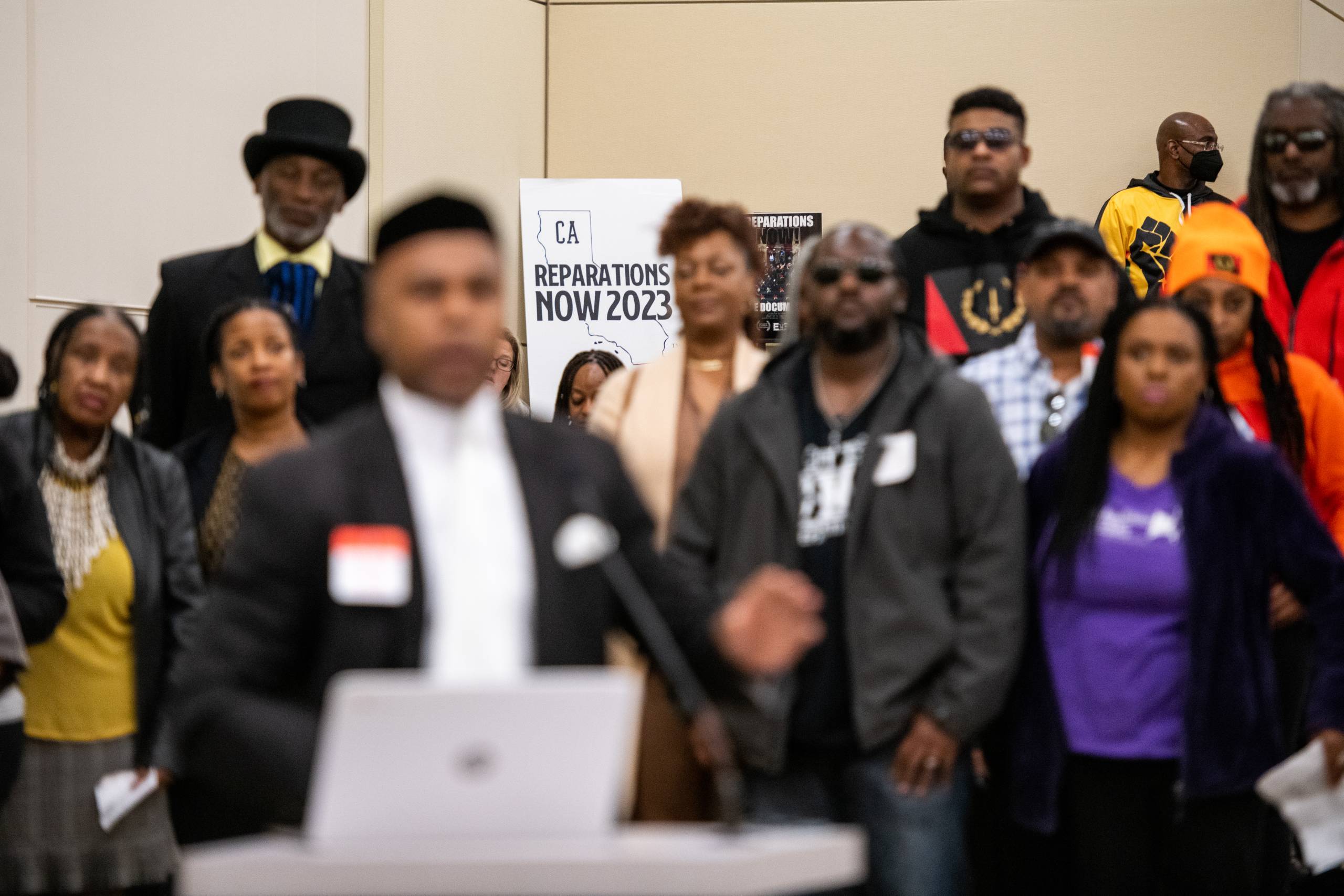
Last June, the task force released a 1,000-page report on how the state government had supported slavery and dozens of discriminatory laws. The report included more than 100 recommendations to right the wrongs instituted in the past and continue today. In January, the California Legislative Black Caucus introduced 14 reparations bills.
Earlier this month, the state Assembly passed a bill apologizing for California’s role in supporting slavery. We need more than an apology, but I’ll save the argument for another column.
At KQED, my colleagues, including Guy Marzorati, Annelise Finney, Lakshmi Sarah, Manjula Varghese, LaBerge and others, have been chronicling the reparations movement. With our reparations tracker, we’re keeping tabs on the bills as they move through the Assembly and the Senate.
In 2021, the state passed historic legislation that provided financial reparations to people who were forcibly or involuntarily sterilized while incarcerated in state prisons after 1979 or at state-run hospitals, homes and institutions during the eugenics era between 1909 and 1979. While the legislation had nothing to do with the reparations task force, it does offer a window into how reparations might be widely provided.
That’s why we’re investigating how the state is rolling out reparations for people who were forcibly sterilized. Among the applicants who volunteered their demographic information, the majority self-identified as Black or African American. Of the almost 600 people who applied, roughly 70% were denied reparations.
In February, a Contra Costa County superior court judge threw out sentence enhancements in a criminal case where Antioch police officers sent racist text messages about four men accused of murder. It was the second time the judge ruled that anti-Black bias had shaped elements of the case, which Antioch officers investigated. The defendants used the Racial Justice Act, a state law enacted in 2020 that was designed to eliminate racial bias by empowering defendants to challenge racism in the justice system. Strengthening the act was part of the state reparations task force’s recommendations.
It seems like Floyd’s death indeed sparked a national reckoning on racism — until we look at the backlash.
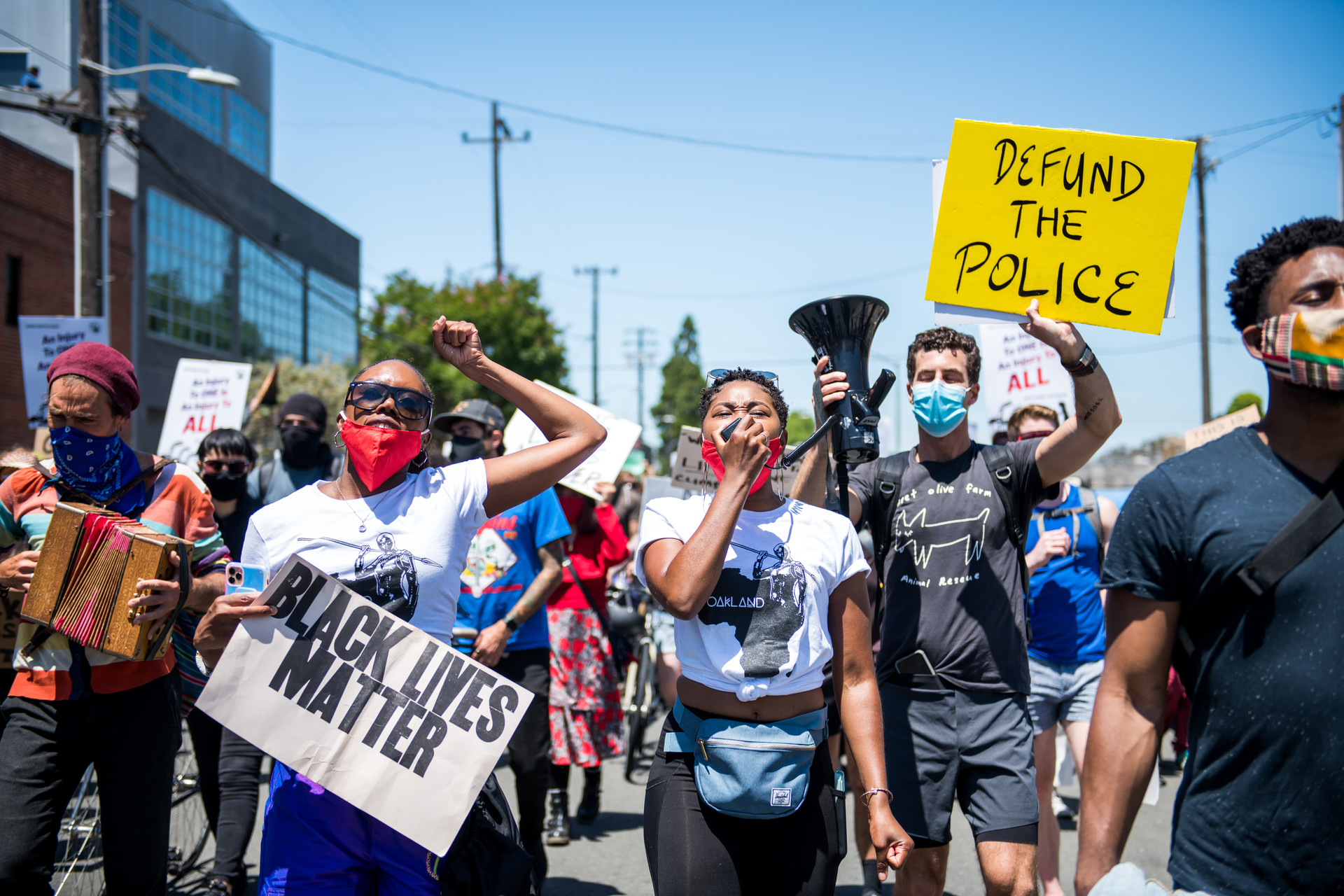
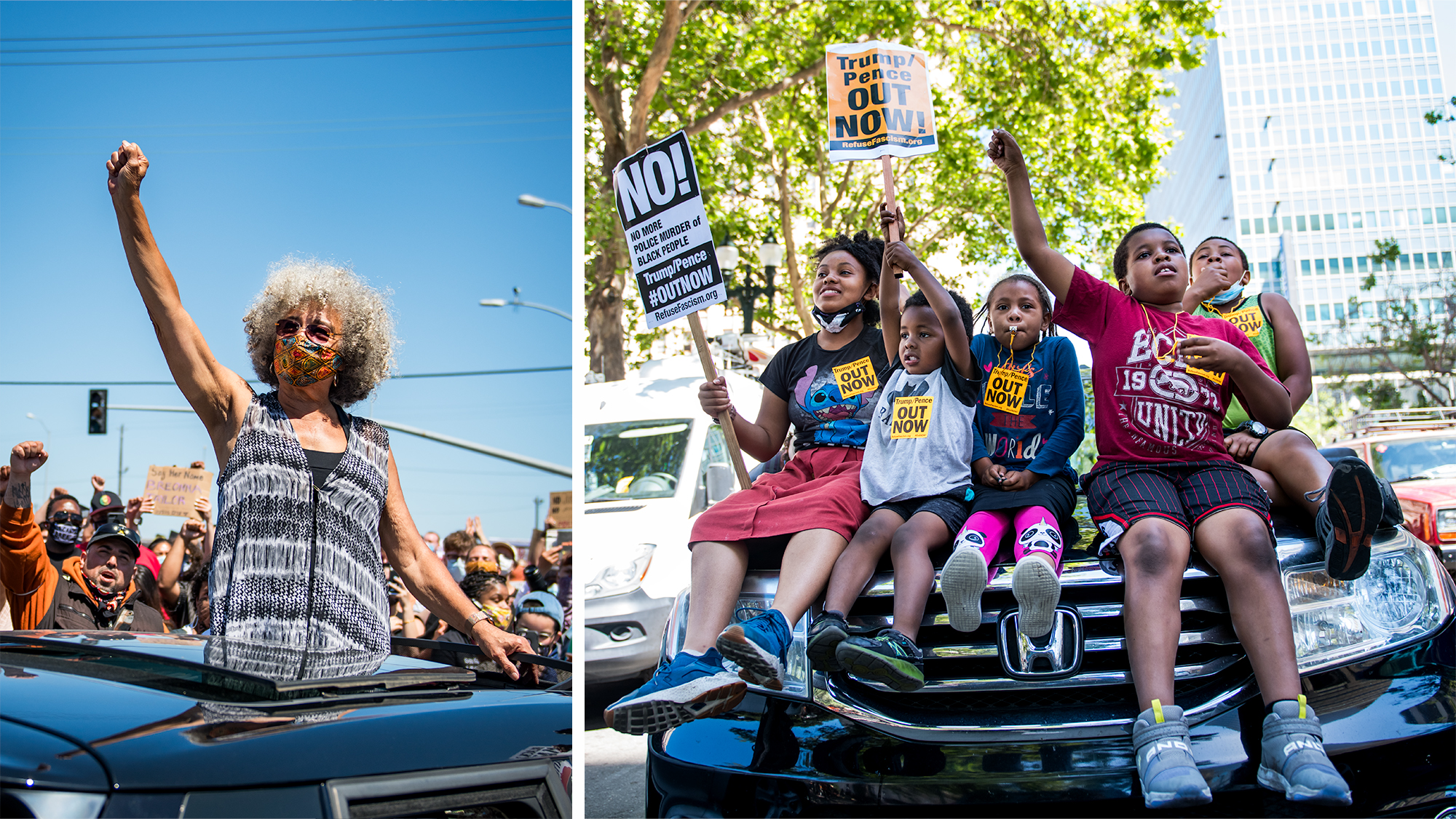
Critical Race Theory, an academic concept that posits race as a social concept embedded in legal systems and policies, has been villainized. So has DEI, the programs and strategies that promote diversity, equity and inclusion. In some states, the teaching of Black history has come under fire. In so-called progressive cities like Oakland, tough-on-crime rhetoric has handcuffed political races and spread fear even as crime is declining.
Sarah Jackson, a professor at the University of Pennsylvania’s Annenberg School for Communication who studies how media, journalism and technology are used by and represent marginalized people, told me that a propagandistic success of people clinging desperately to white supremacy was labeling people who want to talk about race as racist.
“It is the responsibility of folks that are committed to those ideals to be having hard conversations about issues that affect everyone dearly,” she told me in 2022.
As Jackson pointed out to me, the issues that affect Black Americans are often the same that affect others, including white people.
“We want good schools. We want good jobs. Everybody wants that stuff,” she said. “But some of those things are unique, like police brutality, like reparations, like some of these other issues that many media institutions and many members of the public just aren’t used to having to talk about.”
Four years after Floyd’s death, I’m still waiting for America to have a lasting, open discussion about race that goes beyond apologies.
